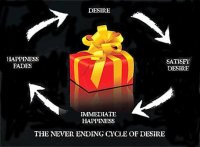Activities to Build Social and Emotional Skills in Elementary Students
Happiness is something we all want, and new research shows that happiness and well-being can be taught! But who has time to teach happiness when there is so much else to cram into a school day? At the university level, we see courses at Harvard and University of Southern California on the Science of Happiness. There are good reasons why those courses are among these schools' most popular classes. Happier people tend to be healthier, more productive, more generous and kinder to others. They also learn more easily and enjoy life. Who doesn’t want some of that?
On the flipside, bullying is an issue that many deal with, and both anxiety and depression are rapidly on the rise. The World Health Organization predicts that by 2020, depression will be the second greatest cause of human suffering cross all ages.
The good news: happiness skills are not hard to learn. It just takes time and practice. Neuroscientist Richard Davidson compares learning happiness to playing tennis. "You won't end up in Wimbledon the first week, but if you keep on practicing, you absolutely will get better at it." Though some students just appear to have a happier disposition and outlook, anyone can become happier. According to Sonja Lyubomirsky, Ph.D., a social psychologist at University of California, Riverside, happiness is influenced by our genes, environment, and also by the activities that we engage in.
- 50% of happiness is influenced by genetic causes
- 10% is influenced by environmental factors
- 40% is influenced by intentional activities
That means that students (and people in general) can influence their happiness levels by a full 40% through intentional practices. In other words, happiness can be learned!
Social and Emotional Learning (SEL) and happiness/wellness skills have great implications for helping the next generation. Elementary-age students deserve this information, too.
Long-Term and Short-Term Happiness
When setting a goal or creating an intention, we should be very clear about the desired outcome. To understand happiness, it's important to consider that there is short-term happiness and also a happiness that lasts much longer. Instant gratification is a huge draw for people of all ages. Things like candy, ice cream or a new toy make us feel good in the short run. But what happens after we get that new shiny object? The thrill wears off in relatively short time, and we adapt to whatever is new. Then, we once again desire something new and the cycle continues . . .
Anyone who works with young children knows that they live in the moment. When they are happy, all they know is that they're happy RIGHT NOW. So how do you teach the difference between short-term and long-term happiness to someone who lives in the moment? Beyond grasping the concept of long-term happiness, how do you teach the value of long-term happiness?
Three Tips for Teaching Happiness
1) Prompt Body Awareness
The body is a superb feedback mechanism. In The Whole-Brain Child, Drs. Dan Siegel and Tina Payne Bryson write: "The body is full of information that it sends to the brain. In fact, a lot of the emotion we feel actually begins in the body." Let's apply this to happiness. A simple way of checking our happiness level is by checking in with how we feel. For example, compare the phrases "I have butterflies in my stomach" to "I have a big pit in my stomach;" compare "feeling light-headed and spacious" to "heavy and cloudy in my head." These are just some of the ways our bodies are constantly providing useful messages -- all we need to do is listen.
2) Help Create Calm
Because the body and the mind are inextricably linked, when we change our physical state, we can also change our emotional state. How can this be done?
- Through relaxation -- Taking five slow, deep breaths is a powerful way to calm down when stress arises. This is a good time to check in with the student about how his or her body is feeling.
- Through movement -- When the amygdala is activated by feeling angry, tense or overwhelmed, a quick way to regain a feeling of balance is through movement. Have students rapidly jump in place to release emotion and re-integrate. Action leads to calm.
Use directed movement exercise to change students' physical state, thus changing their emotional state.
3) Express the Range of Emotions
Happiness has many colors: joy, awe, glee, quiet contentment, nonstop giggling, etc. Anger also has different shades: frustration, rage, disappointment, hurt, confusion, etc. Make a game of expressing and naming emotions by having students act or dance out different emotions, while the rest of the class guesses what emotion it is.
Activities like these develop a deeper awareness of the range of human experience. By naming a feeling, it is easier to tame the bigger emotions that can overwhelm their young systems. Having that awareness at a young age is a real advantage, and a milestone on the road to happiness.
Find lesson plans and additional resources at projecthappiness.org. Meanwhile, in your classroom, how do you teach happiness or use the body to calm the mind?
